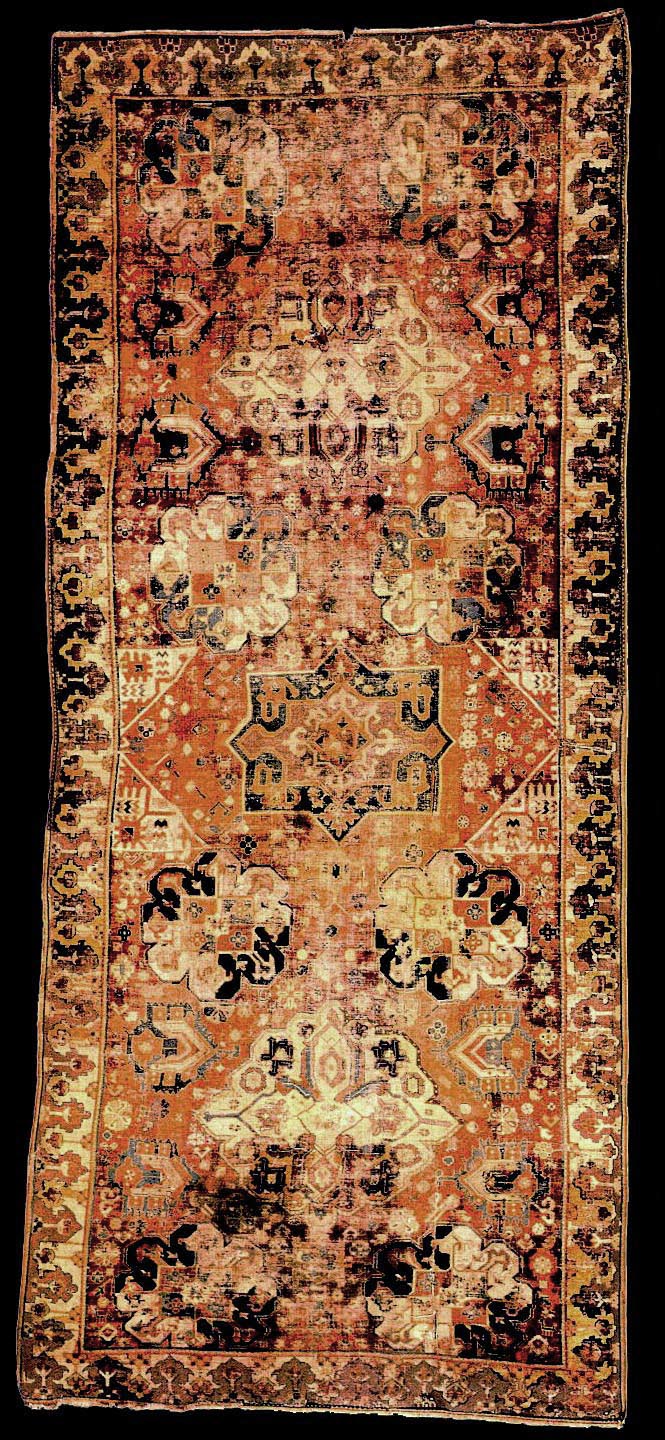|
Sotheby's Auctions » Fine Oriental and European Carpets » lot 22
Sale NY7631
An Azerbaijan carpet, South Caucasus/Northwest Persia,
New York 7,000—10,000 USD Session 1
04 Apr 01 10:15 AM
Lot Sold. Hammer Price with Buyer's Premium: 6,000 USD
DESCRIPTION
An Azerbaijan carpet, South Caucasus/Northwest Persia,
circa 1800
with extensive repiled and rewoven areas, splits, sides and ends partially
rewoven, glued and stitched patches on reverse,
approximately 13 ft. 4 in. by 5 ft. 10 in. (4.06 by 1.78m.)
Warp:
cotton, Z3-4S, ivory
Weft:
wool, Z spun, 2 shoots, red
Pile:
wool, symmetrical knot
Density:
8-9 horizontal, 8 vertical
Sides:
generally not original, one area with remnants of warp cords
Ends:
generally not original, small area with remnants of red kilim end finish at
one end
Colors:
madder red, deep blue, medium blue, blue-green, yellow, aubergine, ivory,
walnut
The unusual design of this carpet brings to mind Caucasian, Anatolian and
Turkmen weavings. A central medallion flanked by two medallions, as in the
carpet offered here, recalls Azerbaijan embroideries of the 17th and 18th
centuries, and is quite similar to an early Caucasian carpet sold in these
rooms, April 12, 1996, lot 39. In the present carpet, these medallions are
supported by smaller Turkic medallions that reflect Turkmen guls. These
proto-guls are very similar to those found on an Eastern Anatolian rug in
the Vakilflar Museum (inv. no. A-28) that has been dated to the 18th century
or earlier, see Mackie, L. and Thompson, J., Turkmen, Washington, D.C.,
1980, fig. 33 and Balpinar, B. and Hirsch, U., Carpets of the Vakiflar
Museum Istanbul, Wesel, 1988, pl. 62. The reciprocal trefoil border of this
carpet is found in several early, 18th century, floral and dragon design
Caucasian carpets: for examples, see Yetkin, S., Early Caucasian Carpets in
Turkey, London, 1978, vol. I, pls. 20, 24, 52 and 85. From its large format,
it is evident that the present carpet was woven in a large workshop
established in the Southern Caucasus and Azerbaijan in the tradition of
Persian and Anatolian court and city ateliers, as were the dragon and
blossom carpets.
 |

